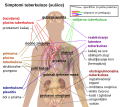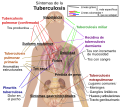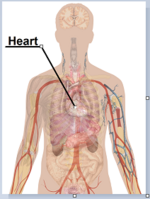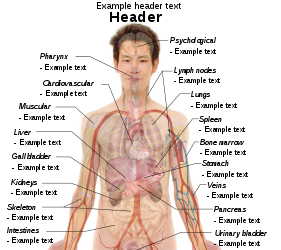Fasciculus:Tuberculosis symptoms.svg

Size of this PNG preview of this SVG file: 676 × 599 elementa imaginalia. Aliae mensurae: 271 × 240 elementa imaginalia | 542 × 480 elementa imaginalia | 866 × 768 elementa imaginalia | 1 155 × 1 024 elementa imaginalia | 2 310 × 2 048 elementa imaginalia | 1 410 × 1 250 elementa imaginalia.
Sua resolutio (fasciculus SVG, nominale 1 410 × 1 250 elementa imaginalia, magnitudo fasciculi: 540 chiliocteti)
Historia fasciculi
Presso die vel tempore fasciculum videbis, sicut tunc temporis apparuit.
| Dies/Tempus | Minutio | Dimensiones | Usor | Sententia | |
|---|---|---|---|---|---|
| recentissima | 07:18, 5 Ianuarii 2012 |  | 1 410 × 1 250 (540 chiliocteti) | Mikael Häggström | Fix |
| 07:03, 5 Ianuarii 2012 |  | 1 410 × 1 250 (540 chiliocteti) | Mikael Häggström | Update | |
| 19:08, 1 Iunii 2009 |  | 1 410 × 1 250 (1.44 megaocteti) | Mikael Häggström | noted "more specific" | |
| 18:56, 1 Iunii 2009 |  | 1 410 × 1 250 (1.44 megaocteti) | Mikael Häggström | {{Information |Description={{en|1=g}} |Source=Own work by uploader |Author=Mikael Häggström |Date=g |Permission= |other_versions= }} <!--{{ImageUpload|full}}--> |
Nexus ad fasciculum
Ad hunc fasciculum nectit:
Usus fasciculi per inceptus Vicimediorum
Quae incepta Vici fasciculo utuntur:
- Usus in ar.wikipedia.org
- Usus in bg.wikipedia.org
- Usus in da.wikipedia.org
- Usus in de.wikibooks.org
- Usus in el.wikipedia.org
- Usus in en.wikipedia.org
- Usus in en.wikiversity.org
- Usus in es.wikipedia.org
- Usus in fa.wikipedia.org
- Usus in fr.wikipedia.org
- Usus in gu.wikipedia.org
- Usus in ha.wikipedia.org
- Usus in hu.wikibooks.org
- Usus in id.wikipedia.org
- Usus in ja.wikipedia.org
- Usus in mk.wikipedia.org
- Usus in ml.wikipedia.org
- Usus in mr.wikipedia.org
- Usus in ms.wikipedia.org
- Usus in my.wikipedia.org
- Usus in nl.wikipedia.org
- Usus in nso.wikipedia.org
- Usus in ny.wikipedia.org
- Usus in or.wikipedia.org
- Usus in pl.wikipedia.org
- Usus in ro.wikipedia.org
- Usus in ru.wikipedia.org
- Usus in sh.wikipedia.org
- Usus in sl.wikipedia.org
- Usus in sw.wikipedia.org
- Usus in ta.wikipedia.org
- Usus in tl.wikipedia.org
- Usus in uk.wikipedia.org
- Usus in zh.wikipedia.org








































